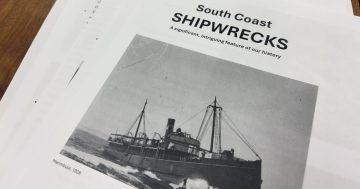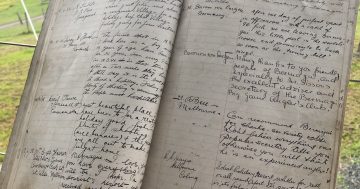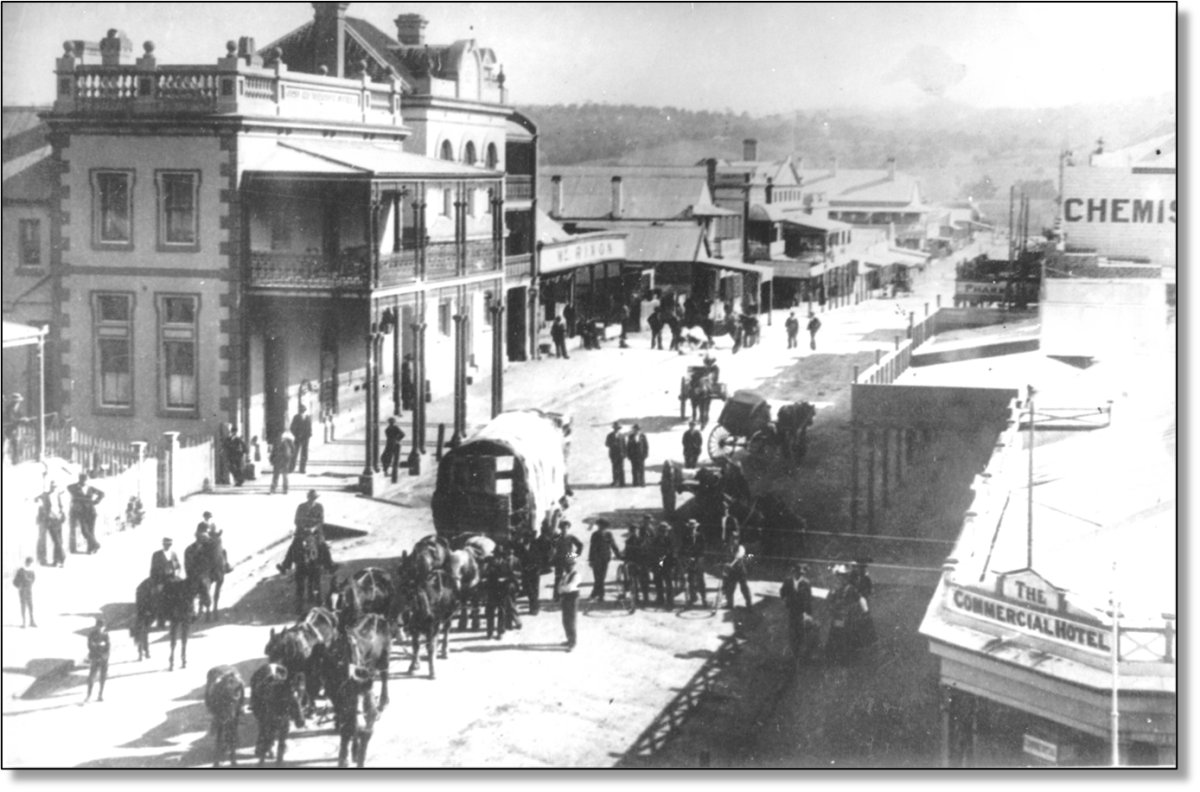
A scene of Carp Street, Bega likely from the early 20th century that shows the old post office, School of Arts and Rixon’s building with Bega Bags Men outside. Photo: Supplied.
Does the name of Bega’s main street come from a tall fishing tale, or something else?
“Nobody is quite sure how Carp Street got its name,” South Coast History Society president Peter Lacey said after the release of a new book that documents the street’s history.
He said Walter A Smith, once an editor of the Bega Standard, had suggested it may have been given the name because when the town was laid out in 1851 someone connected with the work made a big catch of carp on the coast.
“But there are two problems with this – the coast was a long distance from Bega in those days when there were basically no roads in the area (so you would not travel there just for an afternoon’s fishing), and carp are an introduced species to Australia that were not introduced until well after 1851,” Mr Lacey said.
While there may be no definitive answer to this question, the new 138-page book, which is simply titled Carp Street, Bega, looks at plenty of other fascinating parts of the street’s history and has 242 photographs.
The book is a joint South Coast History Society and Bega Valley Historical Society production that also works as a companion to Fascinating Bega: The Anatomy of a Town, which was released earlier this year.
It turns out there is an enormous number of interesting stories relating to the street and the lives of the people who walked across its pavement, including one about the notorious horse stealer George Holt.
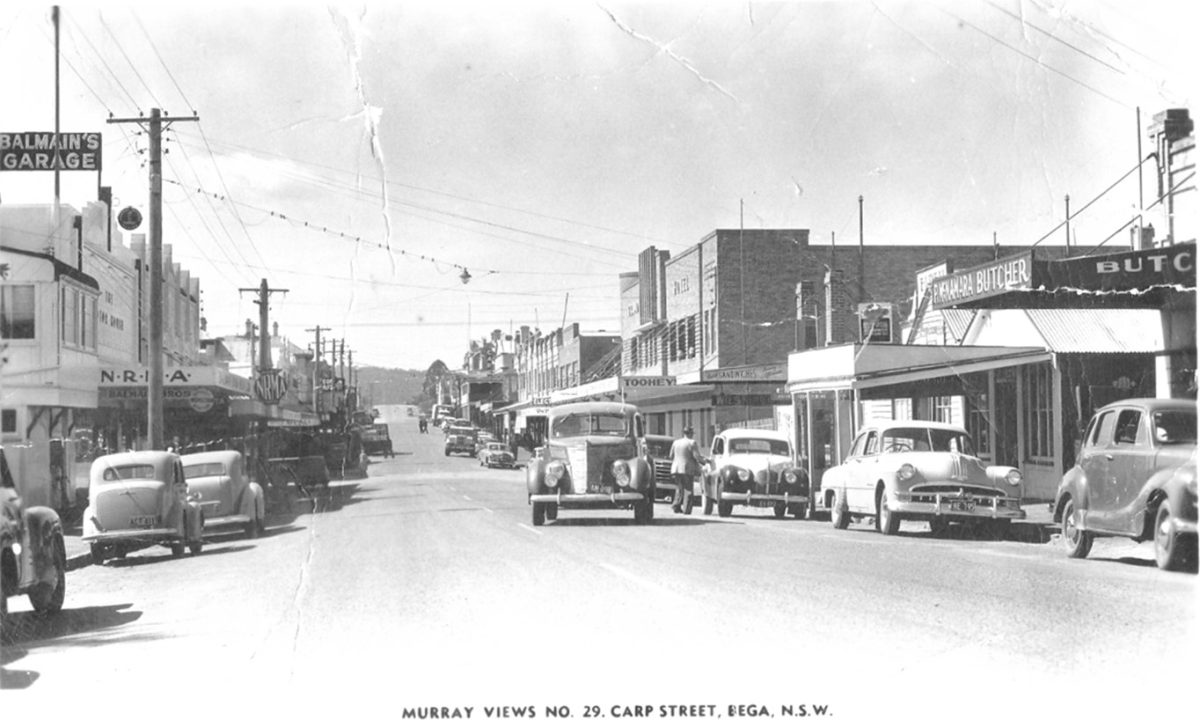
A scene from Bega’s Carp Street, likely the mid-1950s. Photo: Supplied.
The town’s first police lock-up was on the corner of Carp and Peden Streets and was a place where Holt was often confined.
“Prisoners could speak to outsiders through the cracks in the wooden walls and, on occasion, Holt asked a friend to get him a pint of wine,” Mr Lacey said.
“The friend asked how he was to get it in. ‘Leave that to me,’ he said and, when the wine was brought, he made a funnel out of paper, placed it through the crack in the wall, and his friend poured the wine through it.”
Also, he said that in the 1930s, a popular barman at the Commercial Hotel named George Little was confronted by an ageing busker playing a squawking violin outside the hotel.
“The busker’s hat was empty, so Little took the violin, tucked it under his chin and played classical Chopin for 30 minutes, filling the old man’s hat,” Mr Lacey said.
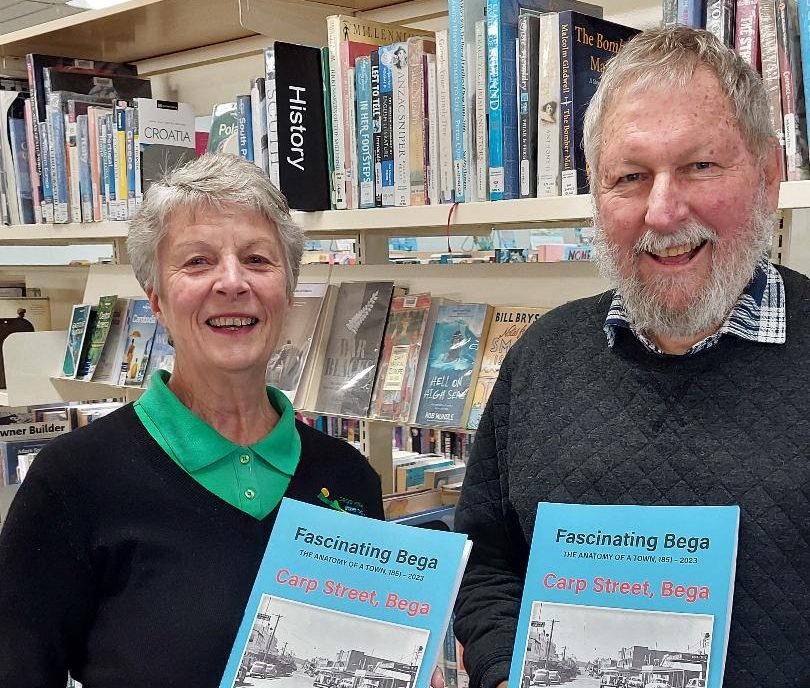
South Coast History Society president Peter Lacey delivers copies of Carp Street, Bega to Anne, a librarian at Bega Library. Photo: Supplied.
He also said Carp Street had not always been Bega’s main street.
The bottom end of Auckland Street and Church Street were earlier CBD’s, before Carp Street gradually became the town’s main drag in the late 19th century.
Originally, it was a ‘working street’, Mr Lacey said, with stock saleyards at one end and basic service businesses such as blacksmiths, saddlers, coach builders, bootmakers, printers, produce merchants, machinery suppliers and the old-style mercers and tailors alongside significantly large general stores, banks, tea rooms/cafes and five hotels.
“And, at various times, four theatres and a School of Arts offered entertainment, also attracting townsfolk and visitors to the street. So, Carp Street has changed dramatically over the years,” he said.
“Carp Street, Bega is the story of that street – so Carp Street as it was then, Carp Street as it is now.”
Mr Lacey said the history societies had embarked on a project to document as much of the history of Bega township as possible before it was lost as well as to provide a record of today’s Bega for historians in the future.
“A basic history of the town was issued earlier this year. Now we are in the process of compiling more detailed histories of individual streets in the town and the history of Carp Street is the first of these,” he said.
Carp Street, Bega costs about $40 and is available from the South Coast History Society (by calling 0448 160 852) or from the Bega Pioneers’ Museum on Bega Street, Bega.







